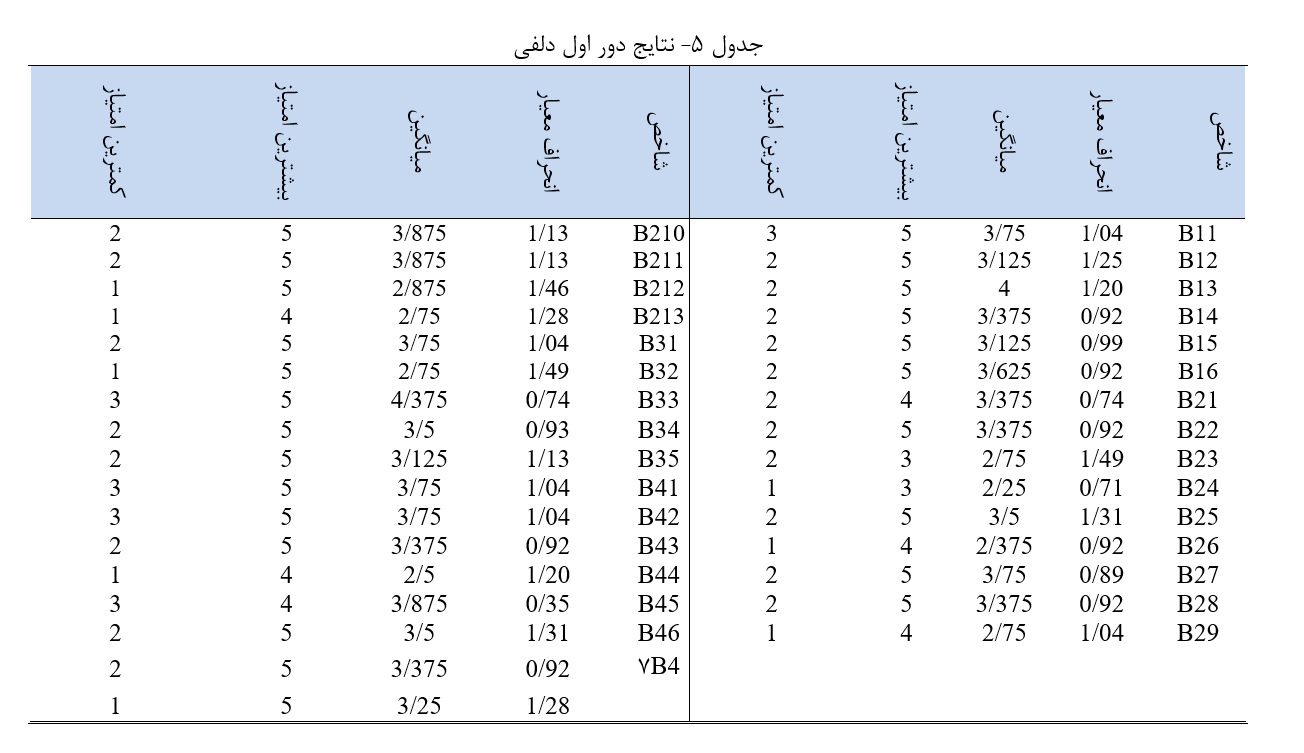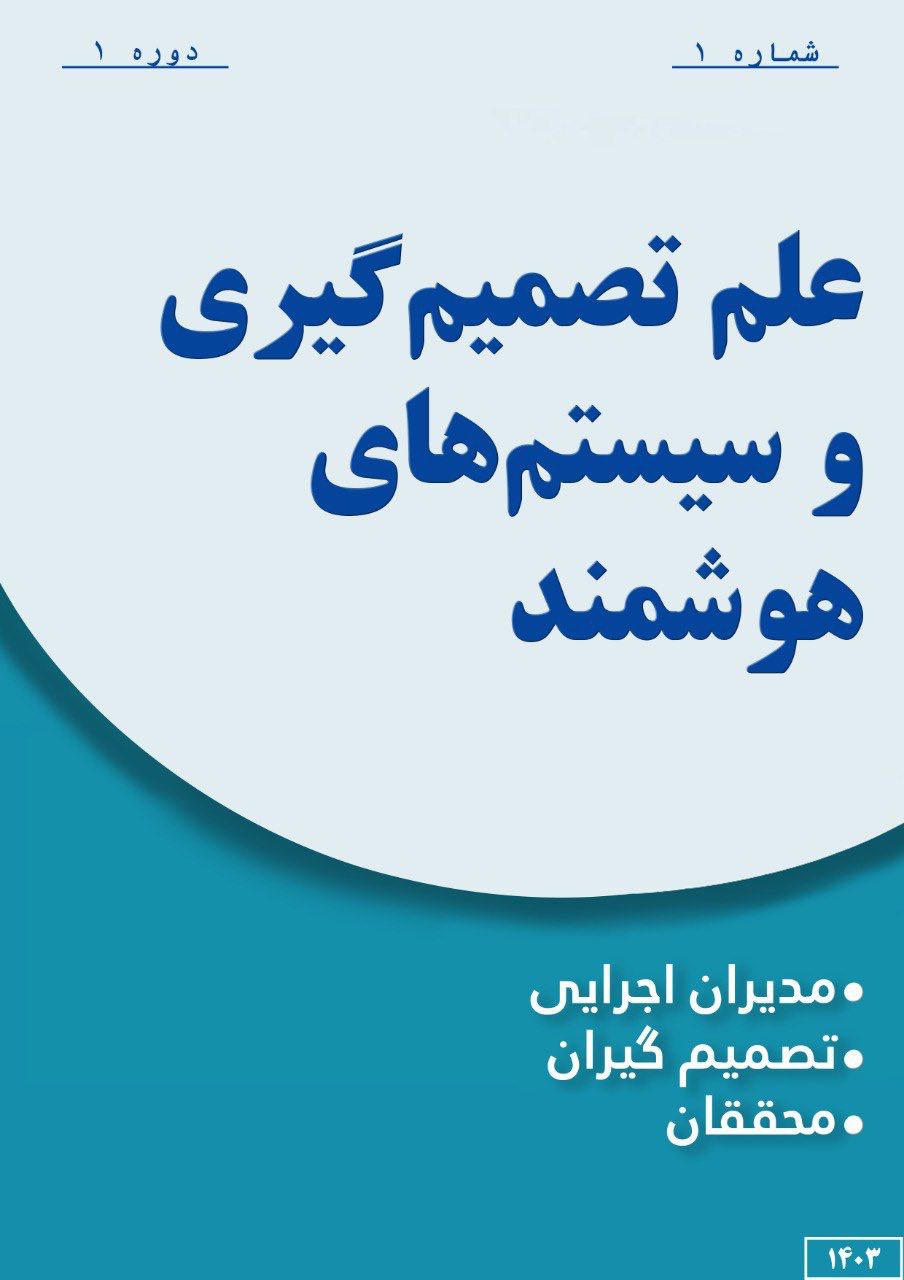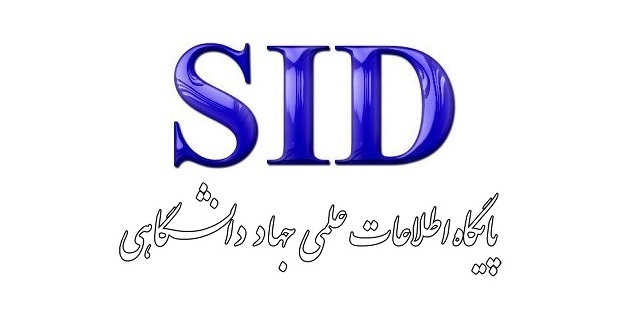پیشبرد پایداری در زنجیره تامین غذا: موانع بکارگیری مدل محصول به عنوان خدمت با تاکید بر نقش فناوری
کلمات کلیدی:
اعداد z, تکنیک بهترین- بدترین, تکنیک دلفی, صنعت غذا, مدل محصول به عنوان خدمت, موانع پیادهسازیچکیده
مدل محصول به عنوان خدمت به عنوان یک راهکار نوآورانه در زنجیره تأمین مواد غذایی، به کسبوکارها اجازه میدهد به جای خرید و مالکیت تجهیزات، از خدمات مبتنی بر فناوریهای دیجیتال مانند اینترنت اشیا و بلاکچین بهرهبرداری کنند. بکارگیری این مدل کسب و کار باعث افزایش انعطافپذیری و پایداری زنجیره تامین خواهد شد. با این حال، پیادهسازی این مدل در کشورهای در حال توسعه با چالشهای متعددی مواجه است. این پژوهش به بررسی موانع اصلی پیادهسازی مدل محصول به عنوان خدمت در زنجیره تأمین مواد غذایی در ایران پرداخته و آنها را در چهار دسته اصلی شامل موانع مالی، فنی، قانونی و اجتماعی-فرهنگی تقسیمبندی میکند. نتایج این پژوهش نشان میدهد که کمبود زیرساختهای دیجیتال، هزینه بالای اجرای فناوری، و عدم وجود سیاستهای حمایتی دولتی از جمله موانع اساسی برای پذیرش این مدل هستند. همچنین، ترجیح فرهنگی به مالکیت دارایی و بیاعتمادی نسبت به شرکتهای خارجی به عنوان موانع اجتماعی-فرهنگی برجسته شناسایی شدند که مانع از پذیرش این مدل توسط جوامع محلی میشوند. برای غلبه بر این موانع، ارائه راهکارهایی همچون توسعه زیرساختهای دیجیتال، ارائه تسهیلات مالی و یارانههای دولتی، آموزش و آگاهیبخشی جوامع محلی، و مشارکت آنها در فرآیندهای تصمیمگیری پیشنهاد شده است. این پژوهش با ارائه راهکارهایی برای برطرف کردن موانع مذکور، نشان میدهد که مدل محصول به عنوان خدمت میتواند به بهبود کارایی زنجیره تأمین مواد غذایی در کشورهای در حال توسعه کمک کرده و به کاهش ضایعات غذایی، افزایش پایداری و کاهش هزینههای عملیاتی منجر شود.
مراجع
Abdel-Salam, O., & El-Gayar, A. (2020). Financial access barriers for SMEs and farmers adopting PaaS models. Journal of Business Economics, 23(5), 203–220. https://doi.org/10.xxxx/jbe.2020.235203
Aboutorab, H., Saberi, M., Rajabi Asadabadi, M., Hussain, O., & Chang, E. (2018). ZBWM: The Z-number extension of Best Worst Method and its application for supplier development. Expert Systems With Applications, 107, 115–125. https://doi.org/10.1016/j.eswa.2018.04.015
Ali, M., & Khan, R. (2019). Legal uncertainties and regulatory challenges in PaaS implementation. Regulatory Policy Review, 7(3), 112–125. https://doi.org/10.xxxx/rpr.2019.073112
Aliakbari, S., Vafaei, F., & Namamiyan, F. (2022). Identifying barriers to the application of the Internet of Things in small and medium-sized enterprises of Ilam Province using fuzzy Delphi technique. Farhang-e Ilam, 76, 97–116. https://doi.org/10.22034/FARHANG.2023.169586
Baines, T., & Lightfoot, H. (2013). Servitization of the manufacturing firm: Exploring the operations practices and technologies that deliver advanced services. International Journal of Operations & Production Management, 33(11–12), 1408–1434. https://doi.org/10.1108/IJOPM-07-2010-0196
Bocken, N. M. P., de Pauw, I., Bakker, C., & van der Grinten, B. (2019). Product design and business model strategies for a circular economy. Journal of Industrial and Production Engineering, 33(5), 308–320. https://doi.org/10.1080/21681015.2016.1172124
Bocken, N., & Shirahada, K. (2024). Circular business models in Japan: Analysis of circular business transformation through an institutional approach. Sustainable Production and Consumption, 54, 389–403. https://doi.org/10.1016/j.spc.2025.01.015
Carson, M., & Agyeman-Budu, E. (2020). Blockchain-enabled food traceability in Ghana: The case of smallholder cocoa farmers. Journal of Sustainable Development in Africa, 22(1), 124–137.
Chen, Y., Wang, Y., & Liu, Y. (2021). Applications of AI in food industry: A review. Journal of Food Engineering, 302, 110740. https://doi.org/10.1016/j.jfoodeng.2021.110740
Habibi, A., Sarafrazi, A., & Izadyar, S. (2014). Delphi technique theoretical framework in qualitative research. The International Journal of Engineering and Science, 3(4), 8–13.
Haji, L., & Valizadeh, N. (2024). Behavioral drivers of reducing food waste among rural households: Application of environmental psychology. Quarterly Journal of Environmental Sciences, 22(1), 165–182. https://doi.org/10.48308/envs.2024.1338
Haseli, G., Sheikh, R., Ghoushchi, S. J., Hajiaghaei-Keshteli, M., Moslem, S., Deveci, M., & Kadry, S. (2024). An extension of the best–worst method based on the spherical fuzzy sets for multi-criteria decision-making. Granular Computing, 9(40). https://doi.org/10.1007/s41066-024-00462-w
Henriques, R., Figueiredo, F., & Nunes, J. (2023). Product-services for a resource-efficient and circular economy: An updated review. Sustainability, 15(15), 12077. https://doi.org/10.3390/su151512077
Kamath, R. (2018). Food traceability on blockchain: Walmart’s pork and mango pilots with IBM. The Journal of the British Blockchain Association, 1(1), 3712. https://doi.org/10.31585/jbba-1-1-(10)2018
Kanda, W., Sakao, T., & Hjelm, O. (2021). Business models for circular economy: Using perspectives of sustainability to support service-based innovations. Sustainability, 13(5), 2746. https://doi.org/10.3390/su13052746
Kumar, R., Singh, R. K., & Gupta, M. (2020). Evaluating the barriers of sustainable supply chain management: A case study. Benchmarking: An International Journal, 27(1), 202–232. https://doi.org/10.1108/BIJ-06-2019-0241
Maijamaa, B., Adehi, M. U., Modu, B., & Umar, M. I. (2023). Technology-driven social innovation in the emerging market. In Q. T. Islam, R. Goel, & T. Singh (Eds.), Fostering sustainable businesses in emerging economies (pp. 1–21). Emerald Publishing Limited. https://doi.org/10.1108/978-1-80455-640-520231001
Mashreq News. (2024, October 17). Strange statistics on food waste in Iran. https://www.mashreghnews.ir/news/1642263/
Mirfalah Demochali, R., Ebrahimipour, M., Ramezanian, M. R., & Moradi, M. (2024). Identifying factors affecting product design in the circular economy and analyzing their relationships using thematic analysis and interpretive structural modeling (ISM). Journal of Technology Development Management. https://doi.org/10.22034/jtd.2024.2035745.1948
Mohammadian, A., Vares, S. H., & Nabizade, N. (2022). Circular business model canvas: Proposing business model design options in a circular economy. Iranian Journal of Management Sciences, 17(65), 123–147. https://doi.org/10.22054/IMS.2023.69558.2218
Mont, O., Dalhammar, C., & Jacobsson, N. (2020). A new business model for sustainable consumption: A case study of product-service systems in Sweden. Journal of Cleaner Production, 10(3), 237–245. https://doi.org/10.1016/S0959-6526(01)00058-3
Mukherjee, I., & Sovacool, B. K. (2021). Access to affordable, reliable, sustainable, and modern energy: Progress and challenges in developing countries. Renewable and Sustainable Energy Reviews, 135, 110118. https://doi.org/10.1016/j.rser.2020.110118
Oghazi, P., & Mostaghel, R. (2018). Circular business model challenges and lessons learned. Technological Forecasting and Social Change, 135, 216–225. https://doi.org/10.1016/j.techfore.2018.01.009
Patel, S., & Sharma, A. (2022). Overcoming cultural resistance through education: PaaS in local communities. Journal of Business and Cultural Studies, 14(6), 159–172. https://doi.org/10.xxxx/jbcs.2022.146159
Reike, D., Vermeulen, W. J., & Witjes, S. (2018). The circular economy: New or refurbished as CE 3.0? Exploring controversies in the conceptualization of the circular economy through a focus on history and resource value retention options. Resources, Conservation and Recycling, 135, 246–264. https://doi.org/10.1016/j.resconrec.2017.08.027
Saeidi, M., Ebrahimpour Azbari, M., & Ramazaniyan, M. R. (2023). Model for improving sustainable performance of small and medium-sized enterprises in the food industry of Gilan Province. Journal of Industrial Management Studies, 7, 48–78. https://doi.org/10.22054/jims.2023.67258.2779
Sajjadian, S. M. (2023). Product-service systems (PSS): A bibliometric analysis and scientific production network structure. Journal of Intelligent Business Management Studies, 11(43), 131–185. https://doi.org/10.22054/IMS.2023.69558.2218
Sengupta, S., Choudhary, S., Obayi, R., & Nayak, R. (2024). Reducing food loss through sustainable business models and agricultural innovation systems. Supply Chain Management: An International Journal, 29(3), 540–572. https://doi.org/10.1108/SCM-01-2023-0059
Supreetha, S., Sonarthi, H., & Mall, S. (2023). Food processing and management of food supply chain: From farm to fork. In J. A. Malik, M. R. Goyal, & A. Kumari (Eds.), Food process engineering and technology (pp. 1–25). Springer. https://doi.org/10.1007/978-981-99-6831-2_6
Vares, S. H., Hajiheidari, N., Kargar Shouraki, M., & Mehrjoo, S. (2025). Presenting a transition framework for a sustainable innovative circular business model. Business Management. https://doi.org/10.22059/JIBM.2024.381695.4837
Vetrova, M. A., & Ivanova, D. V. (2025). Product as a service business model in the context of the development of a digital circular economy: The transition to a circular economy. In Multidisciplinary analysis of digital transformation and global market dynamics (pp. 1–18). IGT Global Scientific Publishing. https://doi.org/10.4018/979-8-3693-3423-2.ch001
Wang, S., Ghadge, A., & Aktas, E. (2024). Digital transformation in food supply chains: An implementation framework. Supply Chain Management, 29(2), 328–350. https://doi.org/10.1108/SCM-09-2023-0463
Zadeh, L. A. (2011). A note on Z-numbers. Information Sciences, 181(14), 2923–2932. https://doi.org/10.1016/j.ins.2011.02.022
Zaki, M., & Yasin, S. (2021). The role of technology in addressing the challenges of food supply chains in developing countries. Technological Forecasting and Social Change, 167, 120719. https://doi.org/10.1016/j.techfore.2021.120719

دانلود
چاپ شده
ارسال
بازنگری
پذیرش
شماره
نوع مقاله
مجوز
حق نشر 2025 مهسا پیشدار (نویسنده مسئول)

این پروژه تحت مجوز بین المللی Creative Commons Attribution-NonCommercial 4.0 می باشد.






